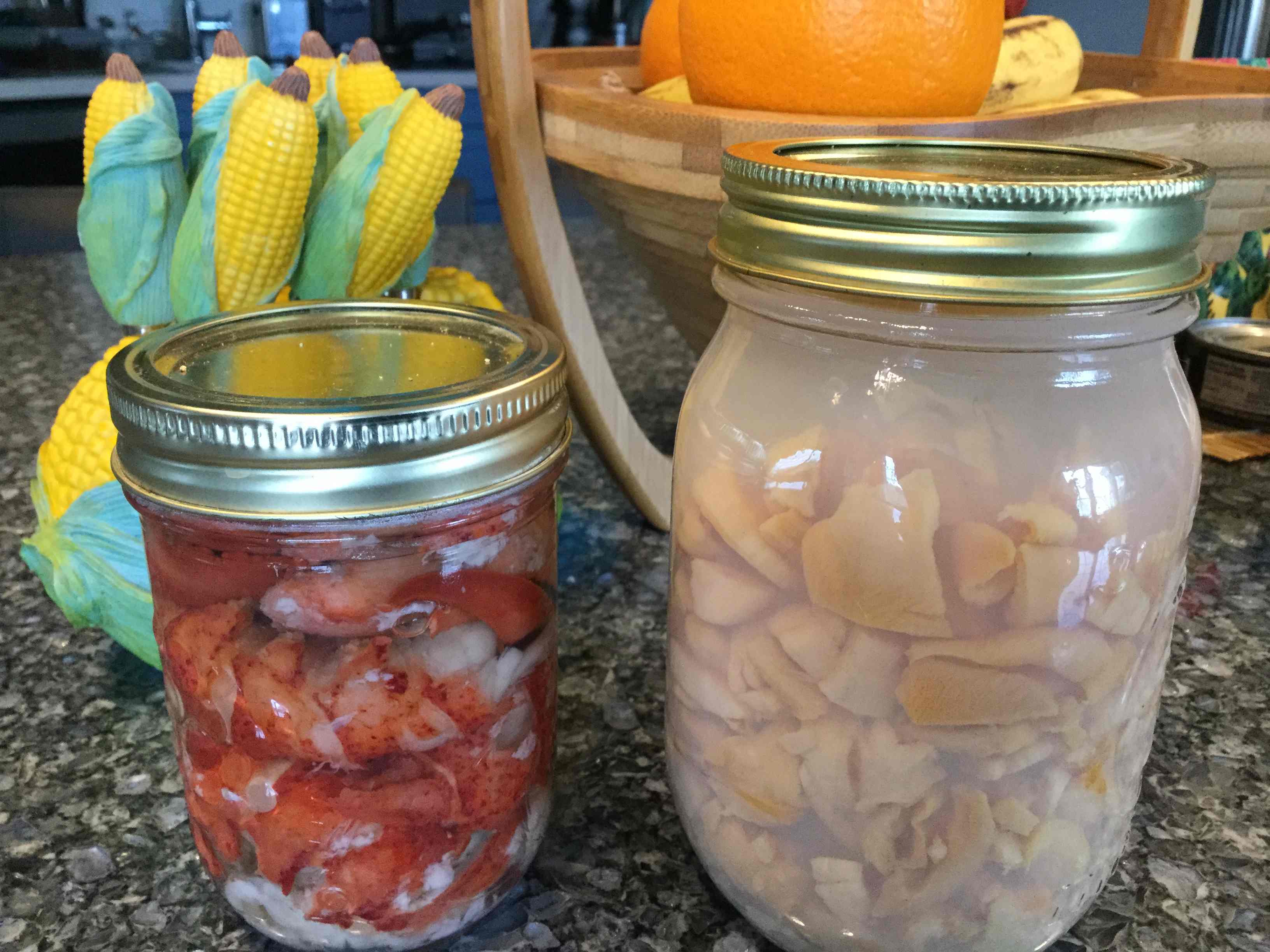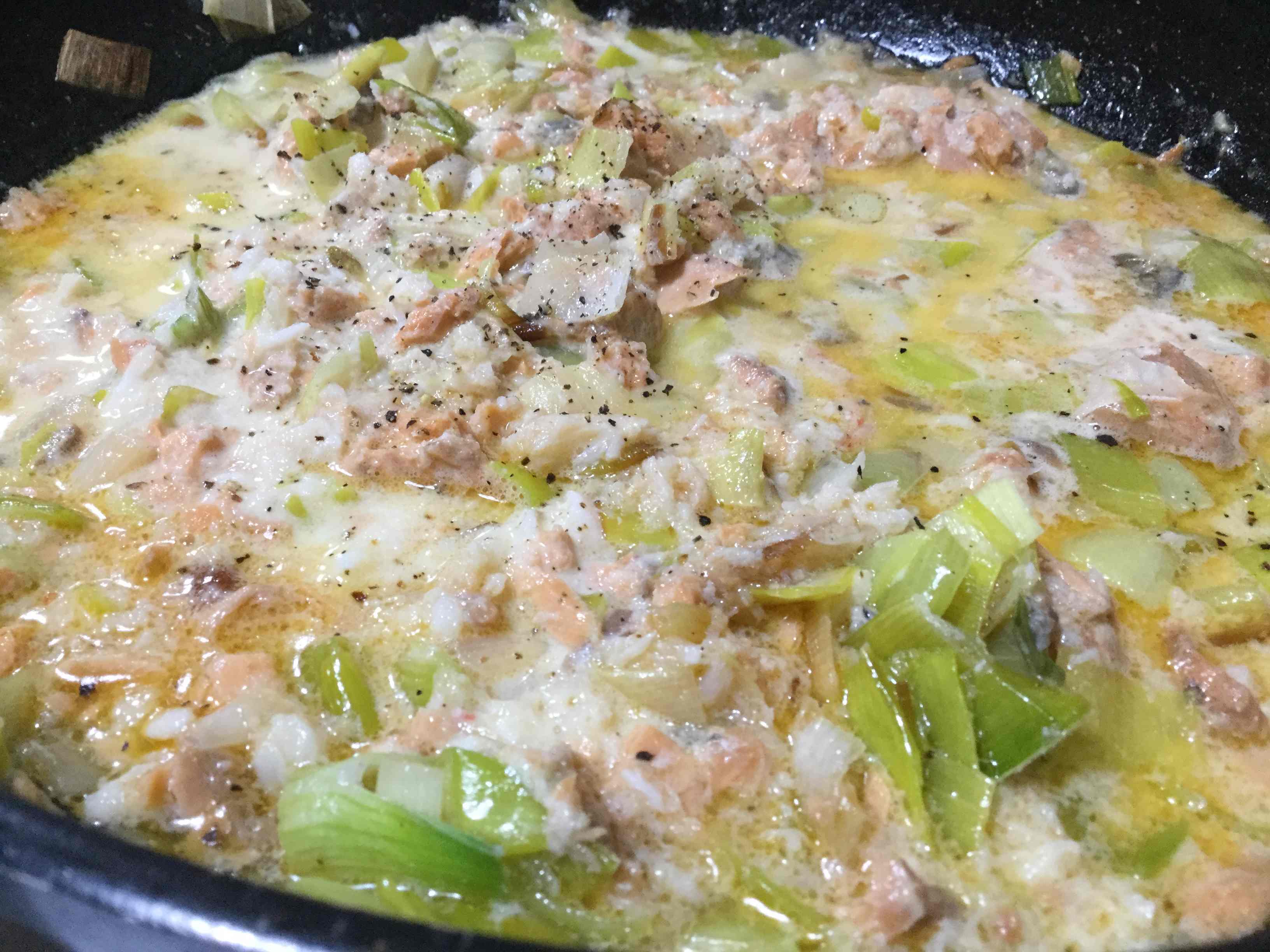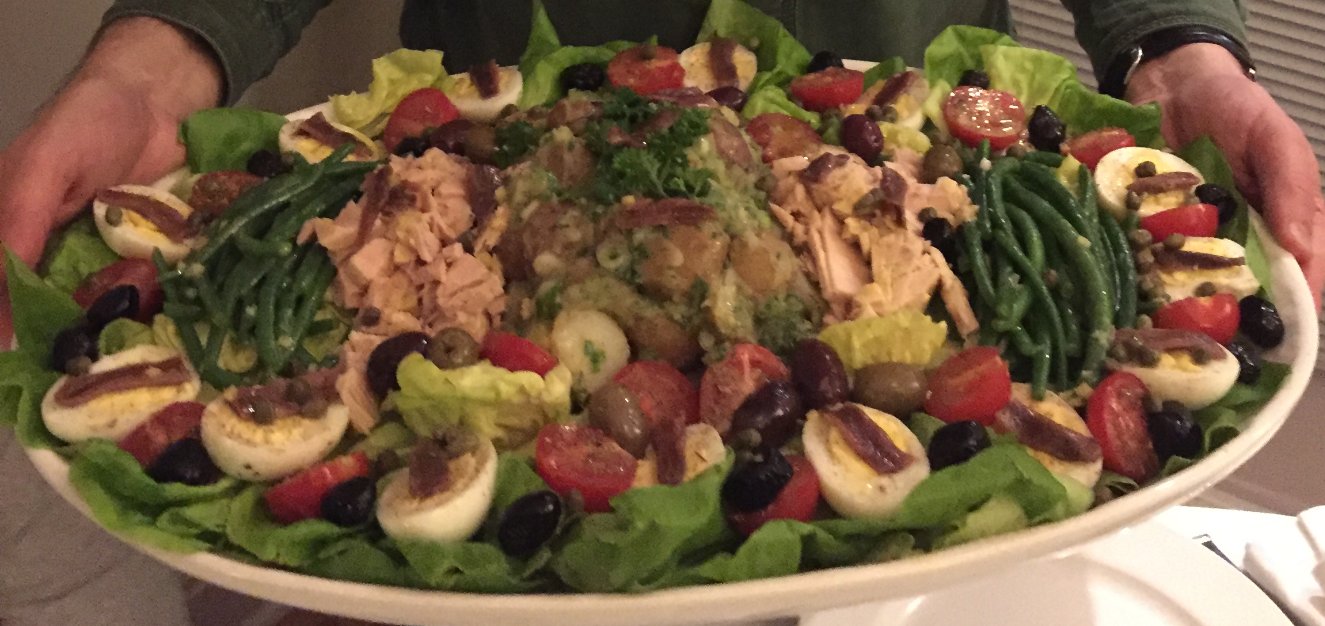This continues on from Canada – Maritime Provinces!
We had spent 11 days in the Maritime Provinces. It is worth a detour if you are fanatical about fresh seafood. We had excellent examples of lobster, clams, mussels and local fishes (mainly halibut and haddock).
We came across three interesting recipes to try when we were back home.
Pasta with Preserved Lobster and Clams
Our friend Roger looked after us for several days. He is not just a great pianist but a very competent cook as well. He explained how some small outlets in the Maritime Provinces preserve lobster and clams. Basically they are cooked in the jars in which they are sold. He used them to make a pasta dish for us which was clearly different from using fresh lobster and clams but which was delicious in its own right, with a lovely flavour from the preserving liquid. In Australia the best option would be to use top quality tinned red salmon and crab, and possibly preserved mussels if they are not vinegary. We will experiment when we have the chance. (See update below.)
Following is Roger’s method for four people.
For the pasta, use fresh or dried linguini, spaghetti or fettuccini. Cook as per normal to have it ready when the sauce is finished.
To make the sauce, add one tbsp each of olive oil and butter to a large frying pan. Heat.
Add one medium sized leek, cleaned, green and white part cut lengthwise then cut across. Or use a medium onion, chopped (but no garlic). Sauté leek until soft.
Use one jar preserved lobster, about 150 g including juice, and one jar preserved clams, 300 g including juice.
(Substitute 1 x 250 g tinned red salmon, 1 x 100 g tinned crab and/or preserved mussels.)
Pour the juice from the seafood into the pan and allow to reduce.
Add 200 ml thick/double cream (or quality sour cream) and 100 ml white wine.
Allow to thicken but do not boil. If necessary combine one tbsp corn flour/starch with some water and add to the sauce to thicken.
Add the seafood. Combine to heat through but not break up. Season with dash of pepper and salt as required.
Tip cooked pasta into the sauce and combine to coat. Add some grated Parmesan to taste and thicken for 30 seconds or so.
Serve immediately with more Parmesan cheese.
Degree of difficulty: 2/5 (not difficult). Preparation time, 15 minutes.
Update, June 2018
We have since experimented with tinned red salmon and crab and we were very pleased with the result. It was certainly good enough to serve to friends on a special occasion. It is also a great recipe for when you want something quick: keep some tinned salmon and crab on hand. And it is an easy dish for difficult cooking situations, such as on holidays or camping. Two photos from our experiment follow.
French Potato Salad
One evening, Roger and his friends made their version of salade niçoise. It was fairly standard, and included lettuce and green beans. The interesting feature was that, instead of using steamed potatoes, they made the following version of potato salad and spooned it over the niçoise. The following photo is poor quality but it gives some idea of a remarkable sight!
The potato salad recipe is from one of his favourite cookbooks, The Barefoot Contessa Cookbook by Ina Garten.
Following is a précis of the recipe, enough to recreate it. There is no mayonnaise or cream, instead the hot potatoes are macerated in a wine and chicken stock, then finished off with a vinaigrette. It gives a very refined result.
Use about 1 kg potatoes, baby ones if possible, even if different varieties. If using larger ones, chop into walnut sized pieces. Cook in plenty of salted water until just tender. Drain well, then cover for ten minutes or so to cook through further.
You need 2 tbsps each of good dry white wine and good warm chicken stock.
When the potatoes have cooled to the point you can handle them, cut into halves. Place into a medium bowl and pour over the wine and stock. Stir through and allow the warm potatoes to soak up the liquids.
In a bowl or shaking jar, make a vinaigrette from 2 tbsps Champagne or good white wine or cider vinegar, ½ tsp Dijon mustard, ¼ tsp each salt and black pepper, about ½ cup good olive oil. Either whisk the olive oil gradually into the other ingredients to make an emulsion, or use your own way of emulsification or combining the ingredients (for example, by shaking in a screw top jar). Check for taste, and add more oil and other ingredients if needed.
Prepare ¼ cup minced spring onions, 2 tbsps minced fresh dill, 2 tbsps minced flat leaf parsley and 2 tbsps of shredded basil leaves.
Give the vinaigrette a final good whisk or shake. Pour over the warm potatoes. Add the spring onions and herbs and stir through. Season with more salt and pepper.
Serve warm or at room temperature as a salad in its own right. Or add to your salade niçoise!
Degree of difficulty: 2/5 (not difficult). Preparation time, 15 minutes, excluding cooking time.
Feather Light Fish Batter
This recipe comes from Baddeck, Cape Breton Island, Nova Scotia. The town survives on tourism, with a season that operates from May through to October. We stayed for three nights at a small B&B called the Dunlop Inn, right on the water front – a perfect location with just a few steps to the water and an outlook to a lighthouse on the peninsular opposite and to a pier where cruise boats pull in during the summer.
Two doors away and next to the pier is the Baddeck Bras d’Or Yacht Club, and there, operating year round you will find ‘Stand and Stuff Your Face’ (website). In the summer they serve from a food van, but in the colder months they serve from the ground level of the yacht club. We ordered a lobster roll and the fish and chips. The batter on their fish was amazing, perhaps the lightest and most delicious batter we have ever eaten on anything other than tempura. We asked the owners of the business, Rhonda and Tim, for their recipe and they summarised it for us as described below.
Note that we have not tested the recipe but will do so when we return to Australia and we will experiment if the quantities and method don’t seem quite right.
We didn’t take a photo, which is a pity. The following photo is NOT their fish and chips. It is the photo of the tremendous beer batter we had at Peggys Cove some days earlier. However, this feather light batter is even better, being more aerated as well as being flecked from the dried herbs.
While the method is used for fish, we would expect it to work equally well with other seafood such as prawns, as well as with chicken pieces and onion rings, or tempura vegetables.
The quantities for the dry mixture are for one cup of flour, but you will need to increase the quantities depending on how much fish you want to deep fry. The amounts given for the baking powder and corn starch/flour seem high, but Rhonda explained that they are necessary to produce a batter that is feather light. (A check of the Internet gives recipes with even higher quantities of baking soda and corn starch, so experiment if you wish.)
Their recipe includes a commercial brand of lemon pepper – a blend of various dry herbs and spices. It gives the batter extra colour and a little extra texture. It is worthwhile trying to recreate, thus instead of lemon pepper, you could substitute a mix from the following: dash of salt, ground black pepper, dried lemon thyme, dried lemon myrtle, dried basil, dried parsley and a dash of dried turmeric for colouring. Don’t use strong herbs or spices which will overpower the taste.
Use beer or soda water (club soda) to make the wet mixture. Use your favourite frying oil. Note that it is important not to drop the battered fish right into the oil but to hold onto it with tongs for a few seconds, otherwise it will sink and the lightness effect of the batter will not be there.
Make a dry mixture from the following, increasing the quantities as required:
– 1 cup plain (all purpose) flour
– 1 tbsp baking powder
– 1 tbsp corn flour (starch)
– 1 tbsp lemon pepper or equivalent (see above)
Halve this mixture. Tip one half onto a plate. Tip the other half into a pasta bowl and, when ready to cook, add enough beer or soda water to make a slurry of coating consistency.
Have your fish fillets dried and at room temperature. (Similarly for vegetables or other ingredients you wish to use the batter for.)
Heat your oil as you normally would for deep frying.
Dredge each fish fillet in the dry mixture to coat both sides. Dip into wet mixture to coat. Using tongs lower the fish into the oil and hold it near the surface until it starts to cook and expand. Let it go once it is able to float. Remove when fish is cooked, drain as normal.
Serve with lemon wedges or with a lemon and dill flavoured mayonnaise or tartare sauce.
Degree of difficulty: 3/5 (moderately difficult) as care is required not to end up with a heavy result. Preparation time for the batter, 5 minutes.
Continued:
For a continuation of our travels, see: Canada – Quebec City & Montreal!








